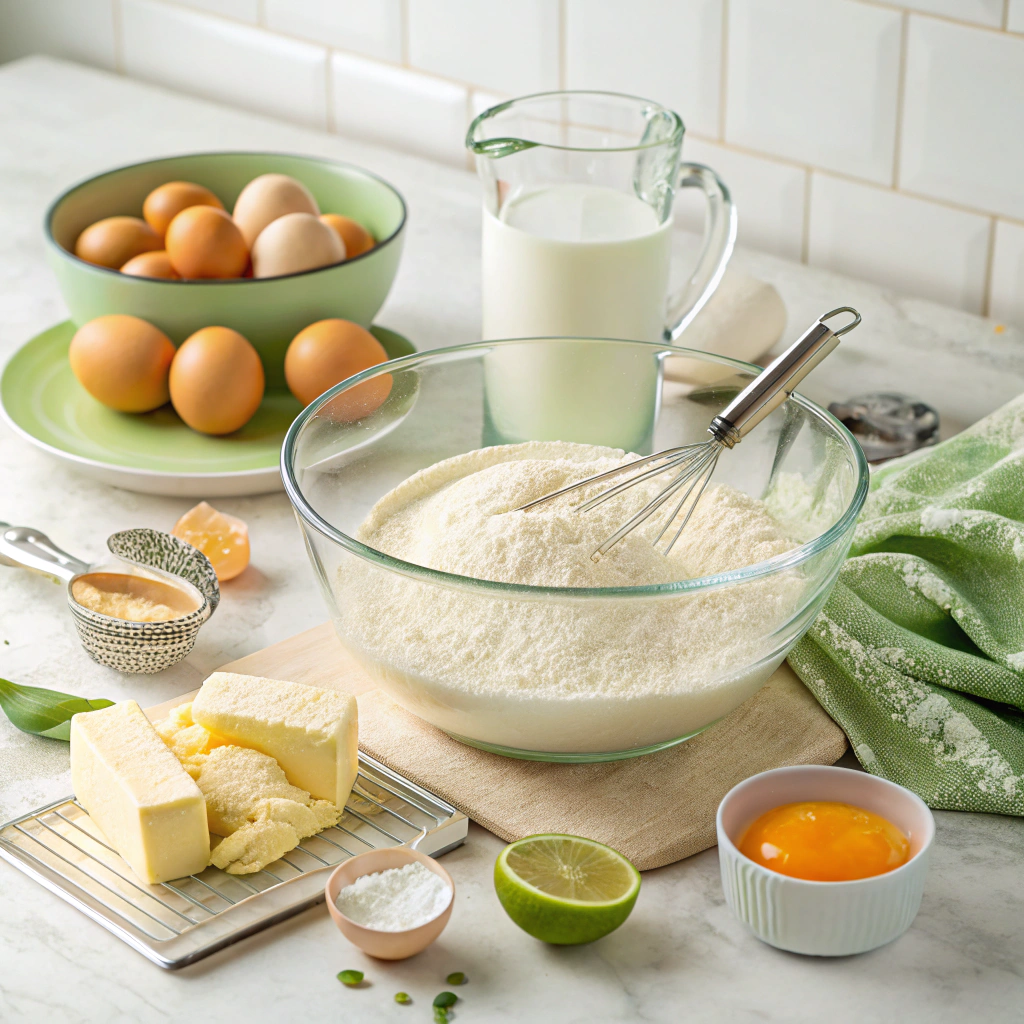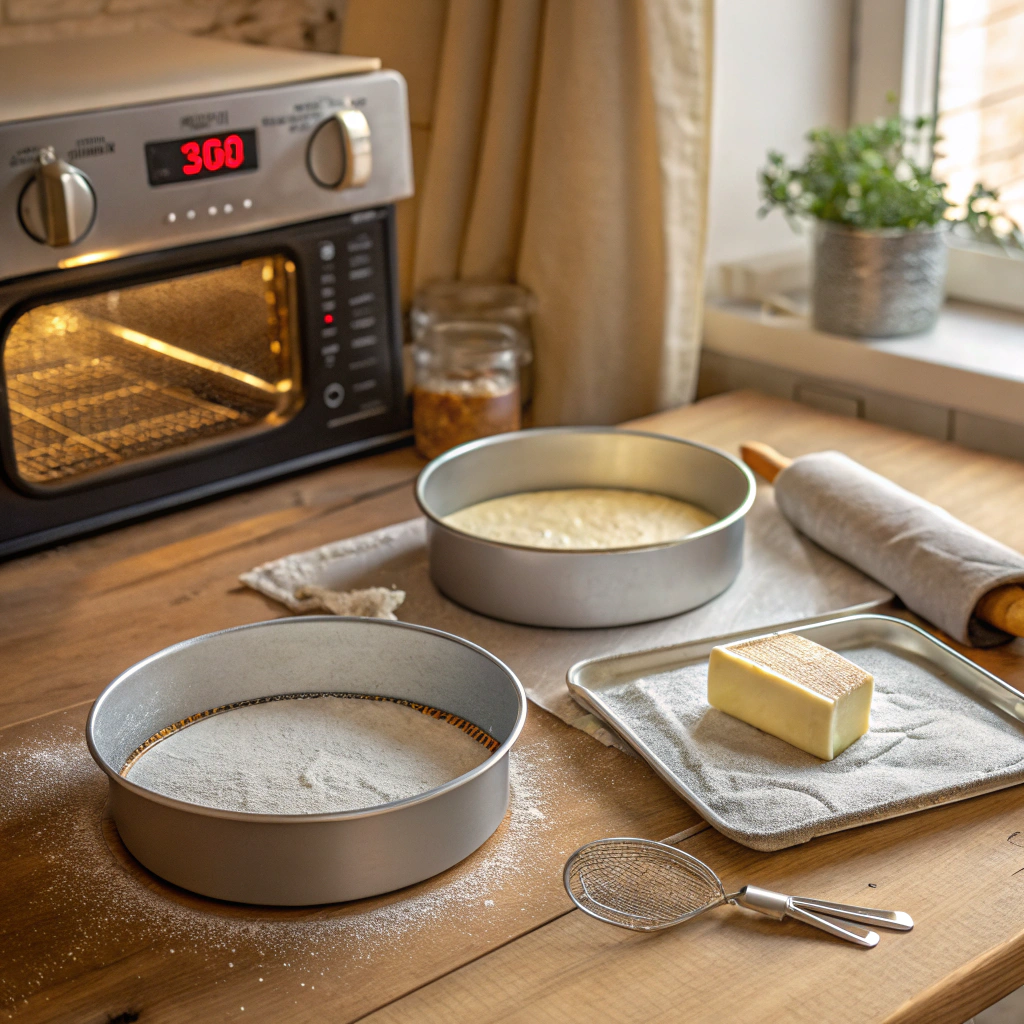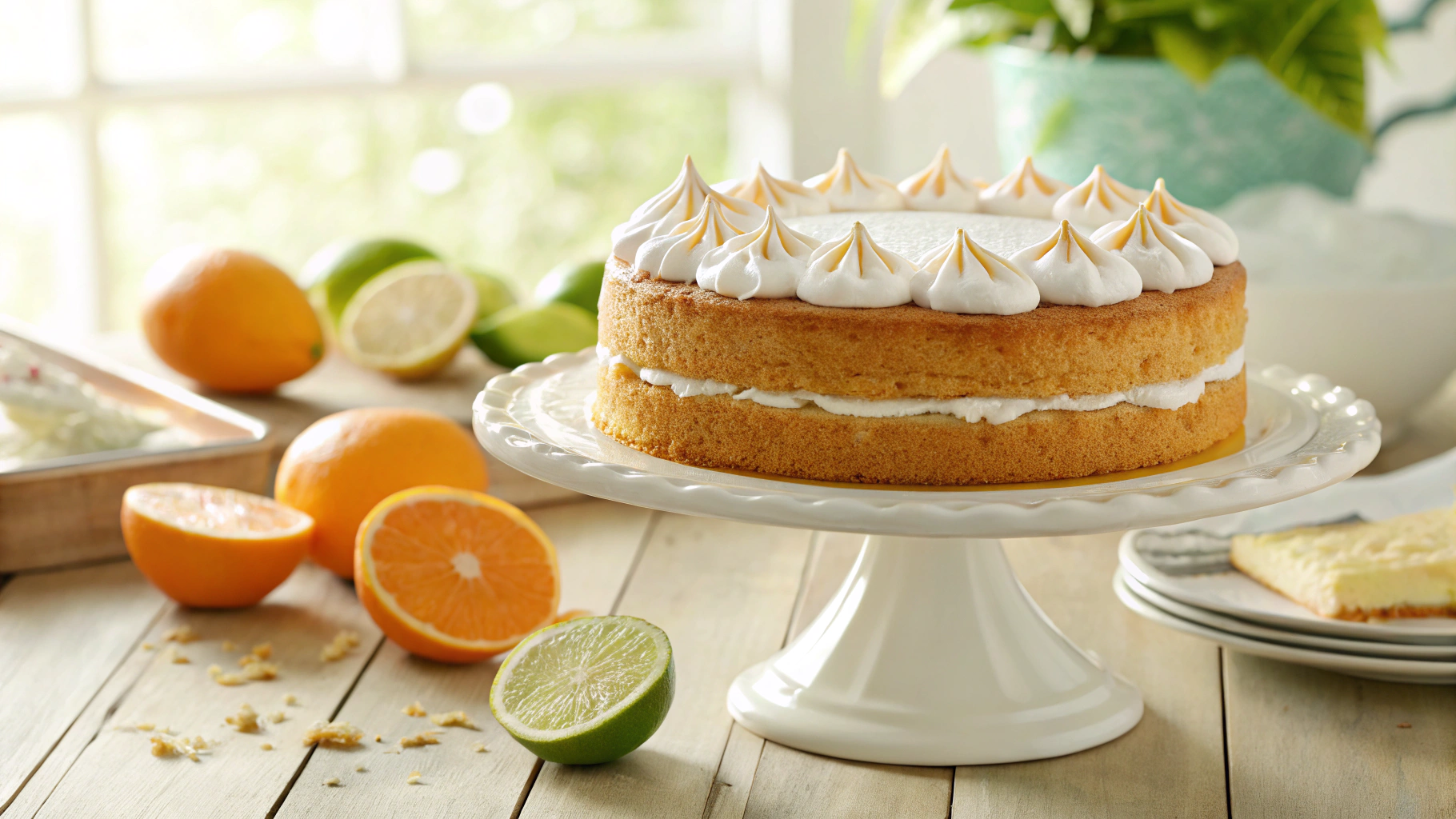Have you ever tasted a cake so soft, so rich, and bursting with tropical flavor that it instantly transported you to the Caribbean? That’s exactly what you get with this authentic Dominican cake recipe, a beloved dessert known for its moist texture, bright citrus notes, and melt-in-your-mouth goodness. Whether you’re celebrating a birthday, hosting a family gathering, or simply craving a sweet slice of the Dominican Republic’s finest dessert, this cake brings warmth and tradition to every bite.
In this recipe, I’ll guide you through the secrets behind that signature creamed butter base and the airy Dominican meringue frosting that gives this cake its iconic finish. Trust me, once you make it, you’ll understand why this treat is the star of every celebration from quinceañeras to Sunday dinners.
Ready to bring a slice of the Caribbean into your kitchen? Let’s get baking!
Table of Contents
Key Benefits of This Dominican Cake Recipe
If you’ve been searching for a cake that’s rich, fluffy, and full of tropical flair, this Dominican cake recipe is about to become your go-to favorite. Whether you’re a seasoned baker or trying it for the first time, this cake brings a level of joy and nostalgia that’s hard to beat.
Here’s what makes it truly special:
1. Exceptionally Moist Texture
Thanks to the creamed butter and sugar technique, the cake bakes up incredibly soft with a light crumb. Each slice practically melts in your mouth no dry cake here!
2. Bright, Refreshing Flavor
What sets a Dominican bizcocho apart is the burst of flavor from fresh orange juice and lime zest. This subtle citrus twist enhances the cake’s sweetness while giving it a unique, Caribbean touch.
3. Celebration-Worthy Every Time
This cake isn’t just for dessert it’s for moments that matter. It’s a staple at Dominican weddings, birthdays, and holidays, making it the perfect centerpiece for any special occasion.
4. Iconic Dominican Meringue Frosting
Topped with glossy, cloud-like meringue frosting, this cake becomes a showstopper. It’s lighter than buttercream, with just the right amount of sweetness and a silky-smooth finish.
5. A Beautiful Blend of Tradition and Simplicity
Even with its traditional roots, this recipe is surprisingly beginner-friendly. With a few key tips and the right technique, you’ll have bakery-level results from your own kitchen.
Pro Insight: Don’t skip the sifting! It keeps the batter airy and smooth, helping your cake rise evenly and achieve that soft, tender crumb we all love.
From first bite to final crumb, this Dominican cake is all about flavor, tradition, and joy. Ready to fall in love? Let’s dive into what you’ll need next.
Ingredients for the Perfect Dominican Cake
Before we dive into mixing and baking, let’s talk about what you’ll need to create this authentic Dominican cake recipe. These ingredients are simple but specific—each one plays a key role in creating that soft, flavorful, and beautifully moist cake that makes this dessert so beloved.
To get the best results, use room temperature ingredients for smoother blending and better texture. Now, let’s gather what you need:

For the Cake Batter
- 2 ½ cups all-purpose flour (sifted for a light, airy crumb)
- 2 teaspoons baking powder
- 1 cup unsalted butter (softened – this is key for creaming!)
- 1 ½ cups granulated sugar
- 4 large eggs (room temperature for even mixing)
- ½ cup whole milk
- ¼ cup freshly squeezed orange juice (for that signature citrus flavor)
- 1 teaspoon vanilla extract
- 1 teaspoon lime zest (optional, but adds a fresh Dominican touch)
- Pinch of salt
For the Dominican Meringue Frosting (Suspiro)
- 4 large egg whites
- 1 ½ cups granulated sugar
- ¼ cup water
- ½ teaspoon cream of tartar (for stability)
- ½ teaspoon vanilla or almond extract
Helpful Tip: If you’re planning to add a filling like guava paste, pineapple jam, or even a pastry cream have that ready too. Many Dominican cakes include a sweet center that adds an extra layer of flavor.
By using these carefully selected ingredients, you’re laying the foundation for a cake that’s not only delicious, but true to its Dominican roots. Now that we’ve got everything prepped, it’s time to bring this batter to life!
Step-by-Step Instructions: How to Make Dominican Cake
Now that your ingredients are ready, let’s turn them into a showstopping Dominican cake! This process is all about patience, love, and a little technique but don’t worry, I’ll walk you through each step like we’re baking side-by-side in the kitchen.
1. Preheat and Prep
Before you start mixing, set the stage for success:
- Preheat your oven to 350°F (175°C).
- Grease and flour two 8-inch round cake pans, or line them with parchment paper for easy release.
Tip: Avoid non-stick spray for this cake it can affect the rise and texture. A butter-and-flour combo works best.
2. Cream the Butter and Sugar
This is what gives the Dominican bizcocho its signature airy texture:
- In a large mixing bowl, beat 1 cup of softened butter on medium speed until creamy.
- Gradually add 1½ cups of sugar, beating until the mixture is pale, fluffy, and almost doubled in size. This usually takes 5–7 minutes.
Why it matters: Proper creaming adds air to your batter, making the cake light and tender.
3. Add the Eggs One at a Time
- With the mixer on low, add 4 eggs, one at a time.
- Beat well after each addition to maintain a smooth, velvety batter.
4. Add Citrus and Vanilla
Stir in:
- ¼ cup fresh orange juice
- 1 teaspoon vanilla extract
- 1 teaspoon lime zest (optional but delicious)
These add the signature Caribbean flavor that makes this cake stand out from the rest.

5. Mix the Dry and Wet Ingredients
In a separate bowl:
- Whisk together 2½ cups sifted flour, 2 tsp baking powder, and a pinch of salt.
Alternate adding the dry mix and ½ cup whole milk into the wet batter:
- Add ⅓ of the dry mixture, mix gently.
- Pour in half the milk, mix again.
- Repeat, ending with the dry mix.
Don’t overmix! Fold gently just until incorporated to keep the crumb tender.
6. Bake to Perfection
- Divide the batter evenly between the two pans.
- Smooth the tops with a spatula.
- Bake for 30–35 minutes, or until a toothpick inserted in the center comes out clean.
Let the cakes cool in the pans for 10 minutes, then transfer to a wire rack to cool completely before frosting.
7. Make the Dominican Meringue (Suspiro)
While the cakes cool, make the classic meringue frosting:
- In a saucepan, heat 1½ cups sugar and ¼ cup water over medium heat. Let it boil until it reaches 240°F (soft-ball stage).
- While the syrup is heating, beat 4 egg whites with ½ tsp cream of tartar until soft peaks form.
- Slowly pour the hot syrup into the egg whites while beating on high speed. Continue beating until glossy stiff peaks form (about 6–8 minutes).
- Add ½ tsp vanilla or almond extract, then beat just to combine.
The result: A glossy, cloud-like frosting that holds beautifully and pairs perfectly with this tropical cake.
Now that your cakes are cool and your frosting is ready, you’re all set to assemble and decorate! Let’s move on to those final pro tips and creative variations.
Pro Tips and Delicious Variations for Your Dominican Cake
Now that you know how to make the classic Dominican cake, let’s explore some insider tips and tasty twists to elevate your baking game. These small adjustments and variations can help you personalize the cake and impress everyone at your table.
Pro Tips for Baking Success
- Use Room Temperature Ingredients: This is a game-changer for smooth mixing and a tender crumb. Take your butter, eggs, and milk out of the fridge about 30 minutes before baking.
- Sift Your Dry Ingredients: Sifting flour and baking powder together adds air and prevents clumps, ensuring an even, light batter.
- Don’t Overmix: Once you add the dry ingredients, fold gently to keep the cake tender and avoid toughness.
- Perfect Your Meringue: Make sure your mixing bowl and beaters are completely clean and dry before whipping the egg whites — any grease or moisture can prevent stiff peaks.
- Bake Evenly: Rotate your cake pans halfway through baking to avoid uneven browning.
Flavor Variations to Try
- Add Guava or Pineapple Filling: Slice your cooled cakes horizontally and spread a layer of guava paste or pineapple jam for a tropical surprise inside.
- Coconut Twist: Fold shredded coconut into the batter or sprinkle on top of the frosting for extra texture and island vibes.
- Chocolate Swirl: Mix in a few tablespoons of cocoa powder into part of the batter and swirl it in before baking for a marbled effect.
- Almond Extract in Frosting: Swap vanilla for almond extract in the meringue for a subtle nutty aroma that pairs beautifully with the citrus flavors.
Storage and Serving Tips
- Store leftover cake covered tightly at room temperature for up to 2 days or refrigerate for up to 5 days.
- To freeze, wrap each layer separately in plastic wrap and then foil; thaw in the fridge overnight before frosting.
- Always frost when the cake layers are completely cool to prevent melting or sliding.
These tips and variations help you master the Dominican bizcocho while adding your own personal touch. Baking is an adventure so have fun experimenting and making this recipe your own! Ready for the final assembly and serving ideas?
Serving Suggestions for Your Dominican Cake
Once your Dominican cake is beautifully frosted and ready to impress, it’s time to think about how to serve it in a way that elevates every bite. Whether you’re celebrating a special occasion or simply enjoying a sweet treat, these serving tips will help you create a memorable experience.
Perfect Pairings
- Tropical Fresh Fruit: Serve slices alongside fresh mango, pineapple, or passion fruit for a refreshing contrast that highlights the cake’s citrus notes.
- Dominican Coffee: A strong cup of Dominican-style coffee or espresso complements the cake’s sweetness perfectly, making it an ideal pairing for afternoon tea or dessert.
- Whipped Cream or Ice Cream: For extra indulgence, add a dollop of whipped cream or a scoop of vanilla ice cream on the side. The creamy texture balances the cake’s light crumb and tangy flavors.
Presentation Tips
- Use a clean cake stand or decorative platter to showcase the cake’s layers and glossy meringue frosting.
- Garnish with lime zest, edible flowers, or a sprinkle of toasted coconut to add a pop of color and texture.
- For parties, cut the cake into small squares or bite-sized pieces to let guests sample easily.
Occasion Ideas
This Dominican bizcocho is perfect for a variety of celebrations:
- Birthdays and anniversaries
- Quinceañeras and weddings
- Holiday gatherings and family dinners
- Simply as a special weekend treat
Serving this cake is about sharing joy and tradition, bringing a bit of the Caribbean warmth into your home. So gather your loved ones, pour some coffee, and savor every delightful bite together!
Conclusion: Bring the Joy of Dominican Cake Into Your Kitchen
Making this Dominican cake isn’t just about baking a dessert—it’s about embracing a rich tradition and sharing moments of joy with the people you love. From its moist, flavorful layers to the light, fluffy meringue frosting, this recipe captures the heart of Dominican celebrations and brings it right to your table.
Remember, baking is a journey. Don’t worry if your first attempt isn’t perfect—the more you practice, the better your cake will become. And with the tips and variations shared here, you have all the tools to make this recipe uniquely yours.
So go ahead, gather your ingredients, follow these steps, and create a cake that’s sure to impress family and friends. Whether for a special occasion or a sweet everyday treat, this cake promises smiles with every slice.
Happy baking and don’t forget to savor every delicious moment!
Why is Dominican cake different?
Dominican cake, or bizcocho dominicano, stands out because of its uniquely moist texture, bright citrus flavor (often from fresh orange juice and lime zest), and its signature light, fluffy meringue frosting called suspiro. The creaming method used for the butter and sugar, along with precise baking techniques, creates a tender crumb unlike typical cakes.
2. What is a traditional Dominican cake?
A traditional Dominican cake is a multi-layered vanilla or butter cake flavored with citrus juices and zest, frosted with a sweet and airy meringue called suspiro. It’s a staple at celebrations such as birthdays, weddings, and quinceañeras, embodying both family tradition and Caribbean flavors.
3. What are the 5 main ingredients in cake?
The five essential ingredients that form the foundation of most cakes are:
Flour
Sugar
Eggs
Butter (or another fat)
Leavening agent (such as baking powder)
4. Does Dominican cake have rum in it?
Traditional Dominican cake recipes usually do not include rum in the batter or frosting. However, some variations and Dominican rum cakes incorporate rum either in the cake or as a soaking syrup for added flavor.
5. What is Dominican rum made of?
Dominican rum is primarily made from sugarcane byproducts, such as molasses or sugarcane juice. It’s aged in oak barrels, which gives it a smooth, rich flavor profile that’s popular both for sipping and for use in cooking and cocktails.
6. Can rum cake get you drunk?
Rum cake contains alcohol, but most of it typically cooks off during baking. The amount of residual alcohol depends on how much rum is used and if the cake is soaked afterward. While eating rum cake in normal portions won’t usually cause intoxication, consuming large quantities or very heavily soaked cakes might have a mild effect.

